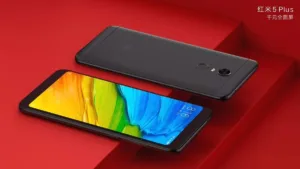According to IDC’s Smartphone Consumer Pulse research study on mobile phone consumer trends in India, one out of three feature phone users would like to buy a data-enabled phone in the next year. With the availability of affordable mobile data, feature phone users are becoming more aware of the different use cases of the internet and want to experience it.
However, affordability of mobile devices in terms of upfront purchase cost remains a strong barrier for the much-needed migration of these feature phone users to smartphones. With the launch of 4G feature phones by Jio and several other brands, the industry is trying to bridge this affordability gap, with telecom providers offering value bundles to this large feature phone user base, with one out of two feature phone consumers showing a strong intent to buy a 4G feature phone during the next six months.
Xiaomi is currently the number-one smartphone vendor in India.
One out of three mobile phone consumers are willing to spend more than their planned budget and more than half are ready to spend between $100 to $200 on a new smartphone. This reflects the attractiveness of this mass segment, which contributes almost half of India’s smartphone market, dominated by brands like Xiaomi, Samsung and Motorola. The availability of consumer offers like zero-cost EMIs, plus easy exchange programs at both offline retail stores and online, are additional incentives for customers to spend more.
Brand remains one of the major decision factors while replacing their old smartphone, with almost 40% of the consumers of Samsung and Xiaomi products staying brand-loyal in their next smartphone purchase. A major replacement driver for almost half the respondents was damage or loss. This was followed by the need to get a new phone with better specifications and technology like higher RAM, better camera and more internal memory. Himanshu Jain, Market Analyst with IDC India, said:
“W
ord of mouth and recommendation by family and friends continue to be the most prominent factors influencing the smartphone consumer’s purchase decision. In tier-one cities like Delhi, Mumbai and Bengaluru, specifications and brand value are other key drivers of choice of a brand, whereas in tier-two and three cities, apart from price, consumers also prefer design and good after-sales service”.
Retailer or promoter push is the most prominent factor for selecting a brand or model. With 25 to 30 smartphone launches every month on average, it becomes difficult for a consumer to make a choice from the variety of options.
Almost half of consumers check online portals for price comparisons and more than 70% take recommendations from their family, friends and colleagues for brand and model choice. Even consumers buying online are visiting offline stores to look at and touch handsets, with 40% of online consumers visiting stores in their vicinity. According to Sachin Mehta, Market Analyst with IDC India:
“The online channel is finding appeal across consumer segments by high decibel marketing, consumer offers and multiple round of sales. Around one third of the online purchases try to get information about prices and specifications via online blogs and reviews”.
In the offline channel, near-to-home convenience plays a vital role in selecting the channel of purchase for more than 75% of consumers who buy offline. Retailers help consumers make brand and model decisions and their discounts and offers entice ~40% of the consumers. Mehta continues:
“In the offline channel, around half of the consumers want to pay via cash followed by zero-cost EMIs. Interestingly, three-quarters of consumers pay via cash while buying a high-end phone above $400”.
However, consumers are willing to hold on to their smartphones for a longer period now, with more than 50% of the respondents having replaced their phones after 18 months or more. However, this is also an opportunity for new brands to capture the other 50% who are more prone to experimenting and replacing their devices more frequently.

